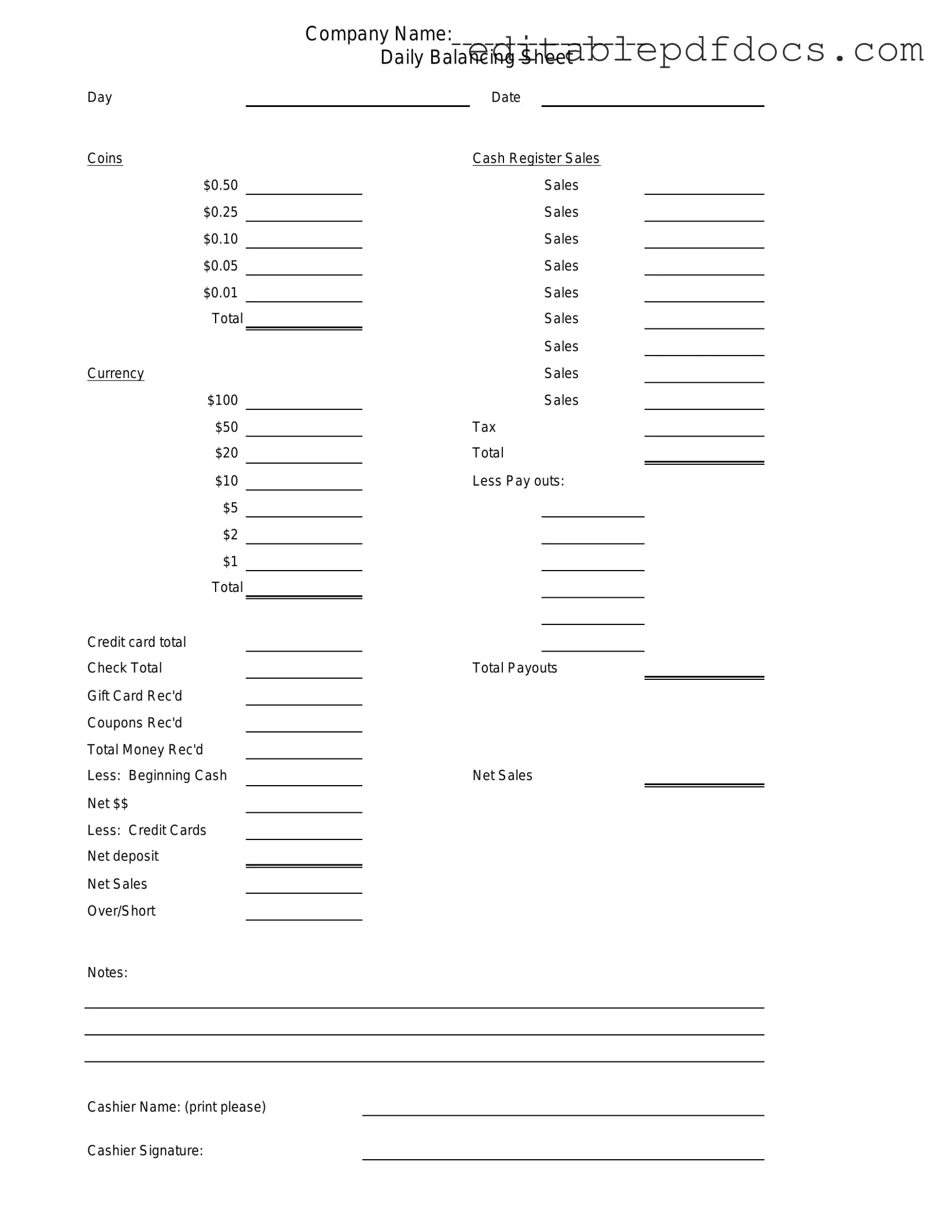When filling out the Cash Drawer Count Sheet form, individuals often overlook important details that can lead to discrepancies. One common mistake is failing to double-check the starting balance. This figure is crucial for an accurate count. If the starting balance is incorrect, it can skew the entire count, leading to confusion during audits or reconciliations.
Another frequent error is neglecting to account for all cash transactions throughout the day. It’s essential to include every sale, refund, and cash deposit. Missing even a single transaction can result in a significant imbalance, making it difficult to determine the actual cash position at the end of the day.
Inconsistent recording practices can also create issues. For instance, if some entries are made in pen while others are in pencil, it can lead to questions about the validity of the entries. Keeping a uniform method of recording ensures clarity and reduces the risk of errors or misunderstandings.
People sometimes rush through the process and fail to verify the final total. Taking a moment to carefully review the sums can prevent costly mistakes. A quick recheck can catch errors before they become larger problems, ensuring that the cash drawer is accurately accounted for.
Additionally, not following the established procedures for filling out the form can lead to complications. Each organization may have specific guidelines that need to be adhered to. Ignoring these can result in incomplete or incorrect information being submitted, which can hinder financial reporting.
Lastly, individuals may forget to secure the form after completion. Leaving the Cash Drawer Count Sheet in an unsecured location can lead to unauthorized access or tampering. Proper storage is essential to maintain the integrity of the information recorded on the form.
